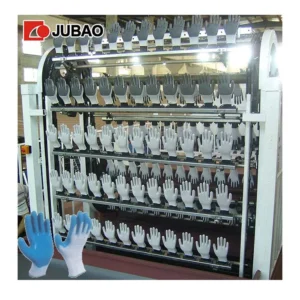Why Do Workers Use Hand Gloves?
Table of Contents
Introduction
Hand protection is a fundamental aspect of workplace safety that cannot be overlooked in any professional environment. Workers across various industries rely on hand gloves as their first line of defense against numerous occupational hazards. From construction sites to medical facilities, these protective barriers serve multiple critical functions that extend far beyond basic comfort.
The human hand, with its complex structure of bones, muscles, tendons, and sensitive nerve endings, represents one of our most valuable tools in the workplace. Yet, hands are also among the most vulnerable parts of the body, frequently exposed to potential injuries that can range from minor cuts to severe chemical burns or permanent disability.
Primary Reasons for Using Hand Gloves
Protection Against Physical Hazards
The most obvious reason workers wear gloves is to protect their hands from physical injuries. Sharp objects, rough surfaces, flying debris, and heavy machinery pose constant threats in many work environments. Gloves act as a protective barrier that can prevent cuts, punctures, abrasions, and impact injuries.
In construction and manufacturing settings, workers handle materials like metal sheets, glass, concrete, and tools with sharp edges daily. Without proper hand protection, minor accidents can quickly escalate into serious injuries that require medical attention and result in lost productivity. Quality protective equipment from manufacturers like Jubaomachine ensures that workers receive reliable protection against these everyday hazards.
Chemical and Biological Protection
Chemical exposure represents another significant concern in numerous industries. Workers in laboratories, cleaning services, automotive repair, and chemical processing facilities regularly encounter substances that can cause chemical burns, skin irritation, or long-term health problems through dermal absorption.
Specialized chemical-resistant gloves create an impermeable barrier between the skin and hazardous substances. These gloves are designed to resist penetration by specific chemicals, preventing direct contact that could lead to immediate injury or chronic health conditions. The selection of appropriate chemical-resistant gloves requires careful consideration of the specific chemicals present in the workplace.

Temperature Control and Thermal Protection
Extreme temperatures, whether hot or cold, can cause severe injuries to unprotected hands. Workers in foundries, welding operations, and steel mills face exposure to intense heat that can cause burns within seconds of contact. Conversely, workers in refrigerated environments, outdoor winter conditions, or handling cryogenic materials need protection from cold-related injuries.
Thermal protective gloves are engineered with specialized materials and insulation to maintain hand comfort and prevent temperature-related injuries. These gloves allow workers to maintain dexterity while providing crucial protection against thermal hazards.
Industry-Specific Applications
Manufacturing and Construction
In manufacturing and construction industries, hand gloves serve multiple protective functions simultaneously. Workers encounter sharp materials, rough textures, vibrating tools, and potential chemical exposure. Heavy-duty work gloves must provide cut resistance, puncture protection, and enhanced grip while maintaining flexibility for precise movements.
Modern manufacturing facilities often require gloves that can withstand repeated use while maintaining their protective properties. Advanced manufacturing equipment from companies like Jubaomachine produces gloves that meet these demanding requirements, ensuring consistent quality and reliability in high-volume production environments.
Healthcare and Laboratory Work
Healthcare workers and laboratory technicians face unique challenges that require specialized glove protection. These professionals must prevent cross-contamination between patients, protect themselves from bloodborne pathogens, and maintain sterile conditions during procedures.
Medical-grade gloves undergo rigorous testing to ensure they meet strict standards for barrier protection, tactile sensitivity, and biocompatibility. The ability to maintain fine motor control while wearing gloves is crucial for medical procedures, laboratory work, and handling delicate instruments.
Food Service and Processing
Food industry workers use gloves primarily for hygiene purposes, preventing contamination of food products while also protecting their hands from cleaning chemicals, hot surfaces, and sharp utensils. Food-grade gloves must be safe for direct food contact while providing adequate protection for workers.
The food service industry requires frequent glove changes to maintain sanitary conditions, making cost-effective, high-quality disposable gloves essential for operations. These gloves must balance protection, comfort, and food safety requirements.
Types of Work Gloves
Material Categories
Work gloves are manufactured from various materials, each offering specific advantages for different applications. Leather gloves provide excellent durability and heat resistance, making them ideal for welding and general construction work. Nitrile gloves offer superior chemical resistance and are commonly used in healthcare and laboratory settings.
Cotton and fabric gloves provide basic protection and comfort for light-duty applications, while rubber gloves excel in wet conditions and provide electrical insulation. Synthetic materials like neoprene and PVC offer specialized protection against specific chemicals and environmental conditions.
Specialized Designs
Modern glove design incorporates advanced features to address specific workplace challenges. Cut-resistant gloves utilize high-performance fibers to prevent lacerations, while impact-resistant gloves include padding to protect against crushing injuries. Some gloves feature textured surfaces for enhanced grip in wet or oily conditions.
Ergonomic design considerations ensure that protective gloves do not impede worker performance. Features like pre-curved fingers, reinforced stress points, and breathable materials help workers maintain productivity while staying protected. Leading manufacturers like Jubaomachine continue to innovate in glove design, incorporating feedback from industrial users to improve both protection and usability.
Safety Regulations and Standards
Workplace safety regulations in most countries mandate the use of appropriate personal protective equipment, including hand protection, in specific work environments. The Occupational Safety and Health Administration (OSHA) in the United States, along with similar organizations worldwide, establishes standards for when and what type of gloves must be used.
Employers are legally required to assess workplace hazards and provide suitable protective equipment to their workers. This includes not only supplying gloves but also training workers on proper selection, use, and maintenance of protective equipment. Regular safety audits help ensure compliance with these regulations and identify areas where additional protection may be needed.
Industry standards such as ANSI/ISEA 105 for cut resistance and EN 388 for mechanical hazards provide standardized testing methods and performance levels that help employers select appropriate gloves for their specific applications. These standards ensure that protective equipment meets minimum performance requirements for safety.

Conclusion
The use of hand gloves in the workplace represents a critical component of comprehensive safety programs that protect workers from a wide range of occupational hazards. From preventing simple cuts and scrapes to protecting against serious chemical exposure and thermal injuries, gloves serve as an essential barrier between workers and potential harm.
As industries continue to evolve and new hazards emerge, the development of advanced protective equipment remains crucial for maintaining workplace safety. The investment in quality hand protection not only prevents injuries but also contributes to increased productivity, reduced insurance costs, and improved worker morale.
Ultimately, the question is not why workers use hand gloves, but rather how workplaces can ensure they have access to the most appropriate and effective protection for their specific needs. Through continued education, proper hazard assessment, and the selection of quality protective equipment, we can create safer work environments that protect one of our most valuable assets – our hands.
